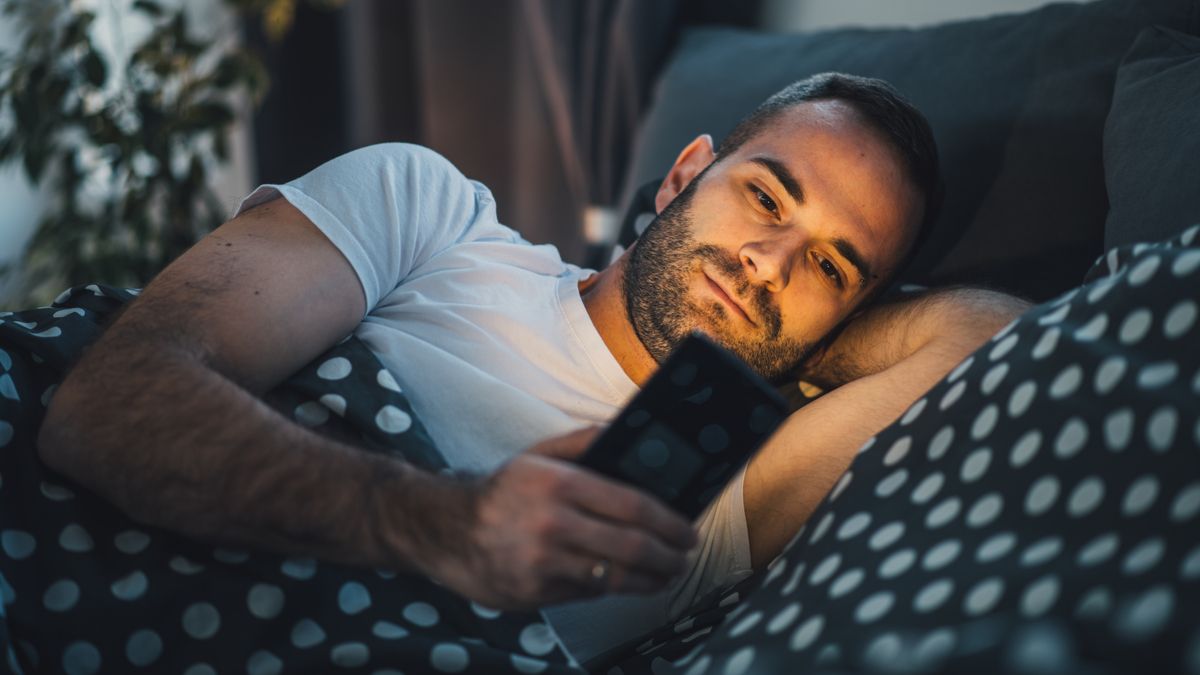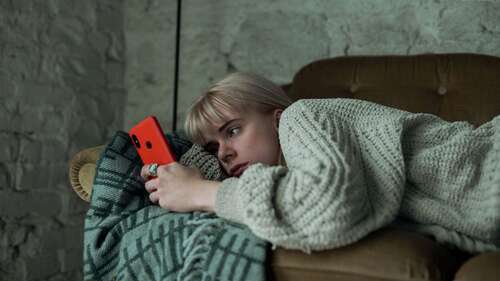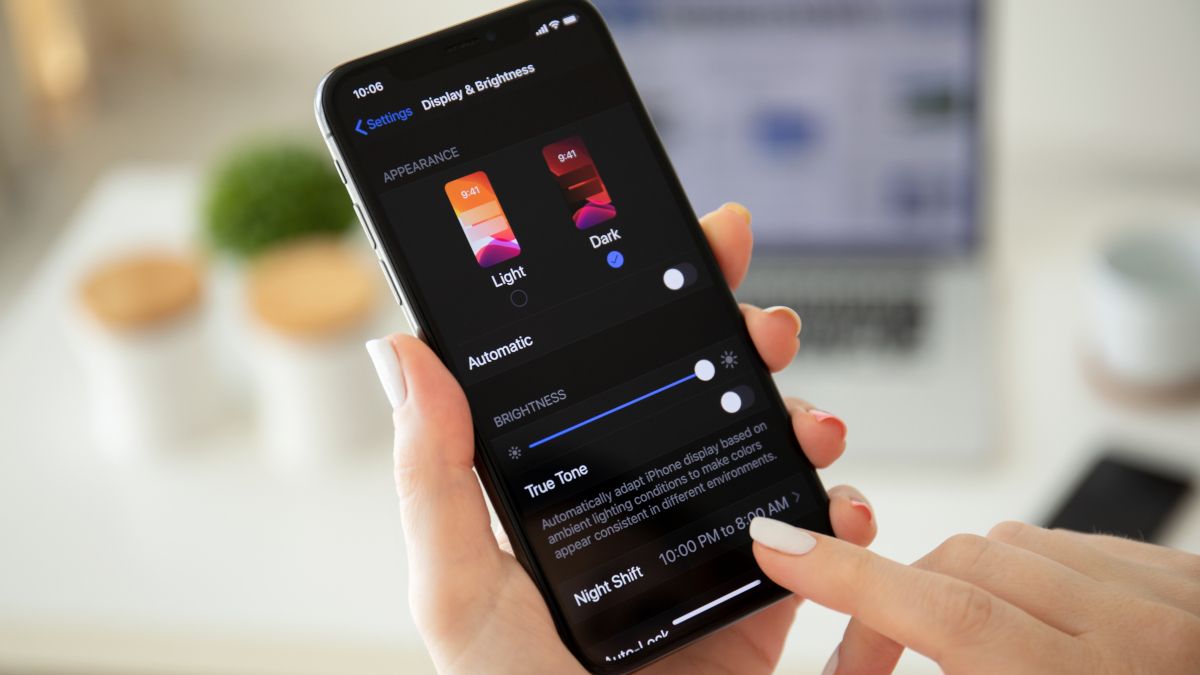Key Takeaways
- Dark mode reduces eye strain, especially at night.
- Unlike bright displays, dark mode doesn’t disturb others in a dark room.
- Dark mode saves battery life on phones with OLED screens.
Vibrant designs were all the rage in tech throughout the 2010s. Thankfully, developers have come to their senses, which is why we now have a dark mode on every major operating system and app. No matter what app or device it is, I always flip the switch to dark, and here’s why.
Bright White Screens Are Agonizing
The displays in our phones, TVs, monitors, and laptops are increasingly getting brighter. While bright screens make for an excellent content viewing experience, especially with HDR, they’re also incredibly hard to look at, especially when the screen displays a lot of white elements.
This phenomenon happens because each pixel inside our display uses three different elements to display the colors red, green, and blue. When only one pixel is activated, we only get a theoretical 33% of the total brightness level. However, when all three are fully activated to create white, we get the complete visible spectrum, resulting in a perceived brighter image.
This isn’t to say that looking at a white screen is bad—we have to see it from time to time, but there’s no need to expose our eyes to it more than necessary. Case in point, you can tone down how much white you see by switching your system to dark mode. My eyes are very sensitive to light, and bright white lights cause me extreme discomfort. That’s why I avoid intense light as much as possible, which means sunglasses outdoors and dark mode indoors.
Dark Mode Is Easier on the Eyes (Especially at Night)
The average American spends over 7 hours a day in front of a screen, with writers at How-To Geek probably spending more. Jokes aside, Computer Vision Syndrome (CVS) is a very real condition that many of us have experienced at one point. Blurred vision, dry eyes, migraines… sounds familiar?
While one of the main causes of CVS is uncorrected vision issues, such as short-sightedness and astigmatism, bright lights can make the problem worse. Staring at a screen at night strains your eyes already enough on its own, but using light mode results in even more eye strain.
This is because your pupils naturally constrict when looking at a bright screen to reduce the amount of light entering your eyes, but if the screen is excessively bright, they can’t constrict enough, resulting in eye strain.
You can actually feel this effect by looking at a screen in dark mode at night and then switching to light mode. Although it’s a temporary effect, and your eyes get used to the brightness eventually, it’s not natural. Nights are, well, dark, so the stark contrast between your display and your surroundings causes a lot of discomfort that you could’ve avoided.
For me, the worst offenders are word-processing apps like Microsoft Word and Google Docs. These apps essentially consist of a white sheet meant to resemble a blank piece of paper. To address the issue, I use the Google Docs Dark Mode Chrome extension, which allows me to switch all interface elements and pages to black. I keep the pages white during the day but switch to black when typing at 2 am like I am right now.
You can force all websites to use
dark mode in Chrome
by typing chrome://flags in the address bar and switching on “Auto Dark Mode for Web Contents.”
If you’re a developer, you can certainly appreciate dark mode in the Integrated Development Environment (IDE), not just because of the reduced eye strain but because it allows you to spot syntax errors more easily. Colors against a black background pop more thanks to the increased contrast.
Another hotly debated topic in relation to light mode is blue light exposure. While some people believe that it might damage your eyes, the consensus is that blue light isn’t actually that harmful. However, using a bright screen immediately before bed can still disturb your sleep. Dark mode can significantly reduce the amount of blue light exposure, so it certainly alleviates some of the guilt caused by through TikTok and Instagram in bed.
Dark Mode Doesn’t Disturb Others
Have you ever noticed how disruptive it is when you’re in a dark room and someone pulls out a bright smartphone akin to a lightsaber? I especially hate it when someone wants to show me an Instagram post on their phone at night, and they’re blasting a double whammy of max brightness and light mode.
If you don’t want to draw attention or just don’t want to disturb your partner at night, switch to dark mode. Your phone and especially your laptop or monitor can light up your whole room, an effect that you can reduce significantly with dark mode. Turning down the brightness level also helps, but it doesn’t fully solve the problem.
Bright phones can be especially distracting when driving at night. The glare caused by a bright screen can hinder visibility, making it especially difficult to check your rearview mirrors. I highly suggest asking your passengers to switch to dark mode and lower their brightness to avoid getting into a car crash.
The Battery on My Phone Lasts Longer
Most phones on the market today use OLED screens. OLED technology allows individual pixels to adjust their brightness as necessary, to the point that the pixel can turn off completely to display black. Your display is a real battery hog, and turning on dark mode can result in significant battery savings.
A study conducted by Purdue found that switching to dark mode saves users an average of 3–9% of battery life at 30–30% brightness. That’s a decent amount of juice already, but it gets better—the same study found that you can extend your battery life by about 39–47% at maximum brightness. That’s almost like slapping a mini power bank on the back of your phone, but it costs nothing and has no significant downsides.
My phone is 5 years old, so it only gets around 4 hours of screen-on time before I have to charge it. I adjust my brightness as needed, which means that dark mode is probably extending my battery life by around 15–20% or close to an hour.
Use Auto for the Best of Both Worlds
While I personally prefer dark mode on all of my devices at all times, there’s merit in using auto mode. Auto mode allows you to use light mode during the day and switch to dark mode at night.
The main selling point of light mode is that it’s easier to see when outside or in rooms that get a lot of sunlight. Or maybe you prefer the aesthetics of light mode and just want to take advantage of dark mode at night. Whatever the reason, we’ve got you covered with our guides on how to enable dark mode automatically on iPhone, Mac, Android, Windows 10, and Windows 11.




